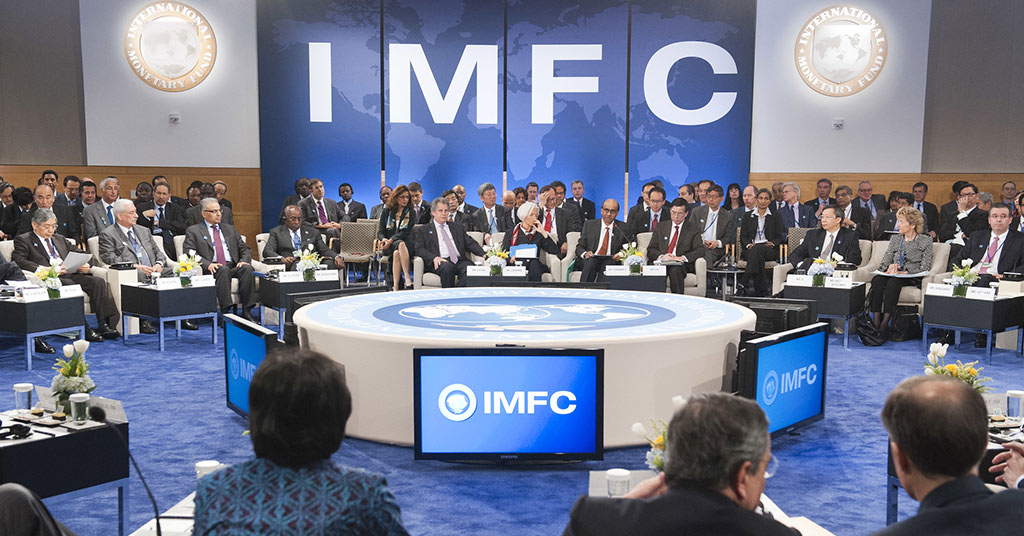What the International Monetary Fund is, and what it really does

The International Monetary Fund: brief history & major functions. Source: shutterstock.com
The 27th of December is considered to be the date when the International Monetary Fund was formed. You may know what it is if you are interested in the economy and geopolitics, or at least if you watch the news. Maybe you were born in a successful country and have never heard of IMF tranches, but a lot of developing countries’ residents know what a tranche (consequently, external debt) is.
Since things being as they are, and the date coincides with the IMF’s “birth date”, PaySpace Magazine has decided to consider the brief history and major functions of the International Monetary Fund.

Why do they create international funds?
Their main role of such funds is financial and advisory assistance on economic development to participating countries.
The International Bank for Reconstruction and Development (IBRD) has a leading role when it comes to stabilisation functions. The IBRD includes the International Development Association (IDA), International Financial Corporation (IFC), and the International Centre for Settlement of Investment Disputes (ICSID). There are also various international banks serving their regions – Asian, African, and European states relatively.
The history of the International Monetary Fund
As we’ve already mentioned above, the IMF is a monetary organisation that acts as a specialised UN entity.
The IMF was established in 1944 as part of the Bretton Woods system exchange agreement. On December 27, 1945, 29 states ratified the Articles of Agreement. Officially, the fund began its operations on 1 March 1947.
How the authorised capital of the IMF is formed
The initial authorised capital amounted to $7.6B. Today, the IMF uses its own reserve and means of payment, the so-called SDR (special drawing rights). They are not printed, but presented in the form of records on balance sheets.

The initial authorised capital amounted to $7.6B. Source: flickr.com
Using SDRs, the balance of payments is regulated, reserves are replenished, and payments for the Fund’s loans are also made. Today, the cost of 1 SDR is equal to $1.4, and the approximate value of the authorised capital of the IMF is estimated at 238B SDR (which equals $327B).
The fund is replenished by countries in accordance with established quotas. They determine the amount of loan, as well as the voting rights of the participating countries.
The payment structure is as follows (approximately, of course):
- 25% of the sum goes to the IMF accounts (in the form of SDRs or other foreign currency);
- 75% of the sum is repaid in the national currency.
How it works
Assistance programs (or credit programs) are one of the main instruments of the International Monetary Fund. The fund notes that it cooperates with states that are experiencing crisis situations. We are talking about the wrong monetary policy of the authorities of the country, as well as crisis phenomena associated with the trends in world markets, or even threats of a non-economic nature (wars, political instability, etc).
The IMF has several different credit instruments, depending on the duration of the program, the depth of the crisis, and the sophistication of the recipient’s economy. However, in general, the same rules apply for most borrowers: the state writes an application for cooperation with the fund => the IMF develops a program according to which the country should counter crisis phenomena => and finally the total amount of loans for this program is allocated. In the future, the loan is divided into separate tranches associated with the implementation of individual steps of the program. As a result, often states do not receive the full amount of a loan because they do not fulfill certain conditions.
IMF tranche
Short-term or long-term lending to IMF member countries is carried out by parts, which are called tranches.
The amount of financing may correspond to ordinary credit shares or may be significantly increased. The state can receive an increased amount of funds in case of serious difficulties with the balance of payments.

IMF can have an economic impact on the borrowing country using the tranche system. Source: flickr.com
Tranches are paid every six months, three months, a month or more often. IMF resources should provide so that they can participate in the reforming and stabilisation of macroeconomic or structural indicators.
Conditions for granting credit
Lending is normally paired with a number of requirements. Failure to comply with the terms of the Fund may result in a refusal to provide further tranches, as well as possibly resulting in restricted lending.
Each new tranche entails tightening of IMF requirements. These conditions may include:
- privatisation of state-owned property;
- establishment of the free movement of capital;
- optimisation or elimination of budget expenditures in the social sector (health care, education, housing, public transport, etc);
- wage reductions;
- tax increases, and much more.
To summarise the foregoing, the IMF can have an economic impact on the borrowing country using the tranche system.
How to pay off a debt
Debtor countries repay each loan tranche within 4-10 years. Thanks to IMF reforms 2010-2011, loan access limits have been doubled.
SEE ALSO:








